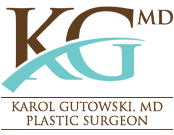Postoperative Nausea and Vomiting with Plastic Surgery: A Practical Advisory to Etiology, Impact, and Treatment
Ambulatory surgery is common in plastic surgery, where many aesthetic and reconstructive procedures can be performed in hospitals, ambulatory surgery centers, or office-based surgery facilities. Outpatient surgery offers advantages to both the patient and the surgeon by increasing accessibility, flexibility, and convenience; lowering cost; and maintaining high-quality care. To optimize a patient’s experience and comfort, postoperative nausea and vomiting (PONV) should be prevented. However, in those patients who develop PONV, it must be appropriately managed and treated. The incidence of PONV is variable. It is often difficult to accurately predict those patients who will develop PONV or how they will manifest symptoms. There are a variety of recommended “cocktails” for PONV prophylaxis and treatments that are potentially effective. The decision regarding the type of treatment given is often more related to provider preference and determination of side-effect profile, rather than targeted to specific patient characteristics, because of the absence of large volumes of reliable data to support specific practices over others. Fortunately, there are several tenets for the successful prevention and treatment of PONV we have extracted from the literature and summarize here. The following is a summary for the practicing plastic surgeon of the current state of the literature regarding PONV cause, risk factors, prophylaxis, and treatment that may serve as a guide for further study and practice management. (Plast. Reconstr. Surg. 141: 214, 2018)









